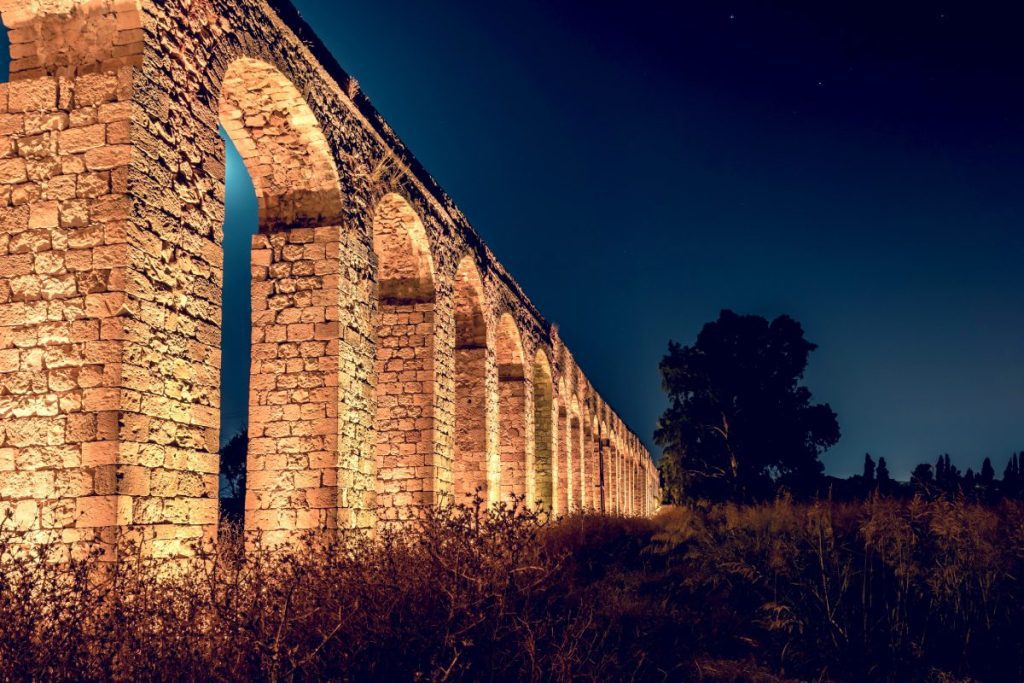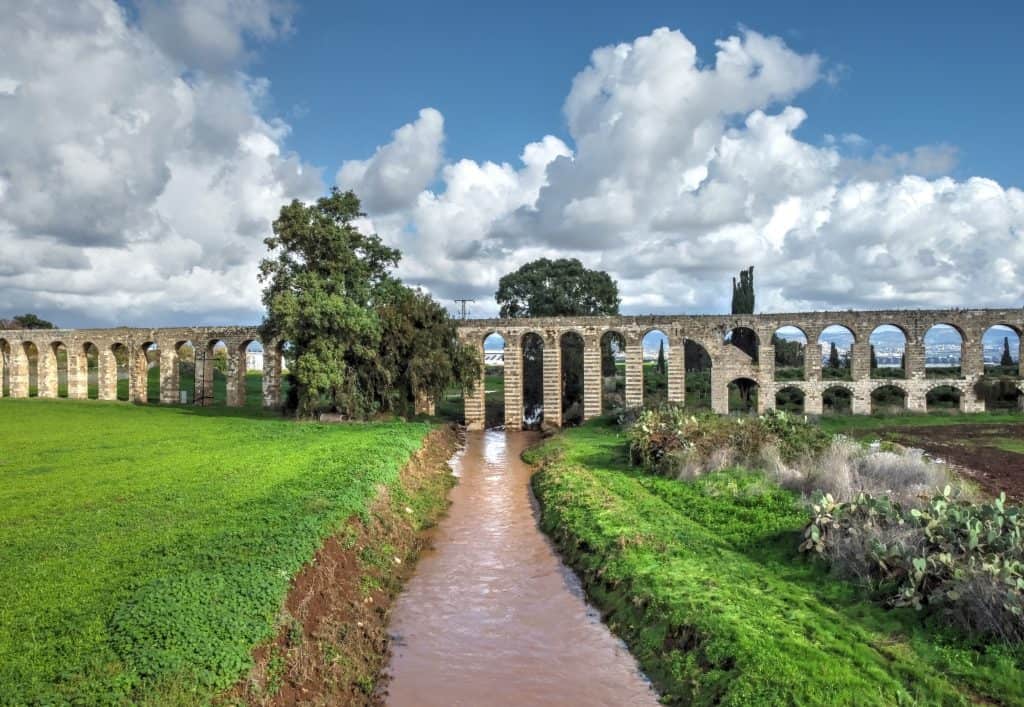The Acre Aqueduct is a now-defunct aqueduct in the Western Galilee region. Jezzar Pasha, Ottoman ruler of Acre and the Western Galilee, refurbished it from 1775 to 1804. It was destroyed by Napoléon in 1799 during the Siege of Acre and originally used pipes to transport the water. The surviving open-channel structure seen today was entirely reconstructed by Jezzar’s son, Suleiman, from 1814 to 1815. It was operational until 1948. Its source is in the Kabri Spring. Though mostly underground, portions of the aqueduct are visible above ground, including two well-known sections on Kibbutz Lohamei HaGeta’ot.

More About Acre Aqueduct
It was built in 1814–1815 by Suleiman Pasha, the governor of Acre at the time. Its route was slightly different from that of Al-Jazar. The aqueduct is visible from Highway 4 between Acre and Mizra. The aqueduct was built in the shape of an open canal made of pieces of clay or stone, and the sealing was done with clay.

Built by Suleiman Pasha, it supplied water to Acre for 133 years, and until the War of Independence, it was blown up by the Haganah fighters, cutting off the city from its water supply. After the establishment of the state, attempts were made to resume its operation but were abandoned due to a water leak along its length.

